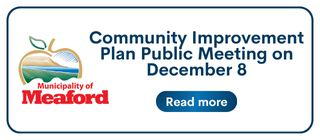 Navigating the world of municipal governance can be frustrating at the best of times for folks who aren’t immersed in the system. When new development proposals surface, they can often raise the ire of an entire community, though some of the anxiety and frustration felt by residents upon hearing of a new development proposal could be alleviated with a better understanding of how the process works.
Navigating the world of municipal governance can be frustrating at the best of times for folks who aren’t immersed in the system. When new development proposals surface, they can often raise the ire of an entire community, though some of the anxiety and frustration felt by residents upon hearing of a new development proposal could be alleviated with a better understanding of how the process works.
I was reminded of the frustrations that people can feel during Monday’s statutory public planning meeting focused on a development proposal located on Miller Street, a rural setting on the fringe of what is considered the urban area of the municipality.
People can get angry at council and the municipal staff when it comes to development proposals, but that anger is most often misplaced.
Recently, a reader asked me why “council proposed developments that they know will anger voters”. After explaining that council doesn’t propose anything when it comes to development, and that council must entertain all applications submitted, the reader was visibly surprised, noting that they “had no idea”.
Anyone with a patch of land and a dream can march into the municipal administration office with a development proposal, and it must be entertained no matter how unrealistic the proposal might be.
A municipality can’t simply turn away a property owner who wants to develop their property, and they stop by the municipal office to start the process of a zoning amendment, or whatever other concessions might be required in order to realize their development dream.
All applications must be accepted, and must be put through the established process as defined by the provincial Planning Act, along with ensuring conformance to the county and municipal official plans.
There are several steps in the process that begin with an application being submitted to and received by municipal planning staff. The application is given an initial review by planning staff, and once the application is deemed complete, a statutory public planning meeting is scheduled before the application moves any further. This is the stage where folks often show up at the council chamber already fuming, some under the assumption that the development proposal is a ‘done deal’, yet in reality it is in the very earliest of stages with no decisions having been made at all.
After the statutory public planning meeting, municipal planning staff undertake a full review of the file, including all comments received by official agencies and residents alike. Following that review, a report is prepared, often lengthy, and is presented to council. Council then reviews the report and the recommendations included before engaging in some discussion, or sometimes debate, before voting to accept or reject a zoning amendment application. Once council has made a decision, that decision can be appealed to the Ontario Land Tribunal, which is not uncommon, and then council’s decision could very well be reversed. If there is no appeal, council’s decision becomes final.
As you can see, there are a number of steps in the process, and among the earliest of steps is consultation with the community.
The very purpose of the provincially mandated statutory public planning meetings is to gather input from the community that would or could be impacted by a given development proposal, and that feedback is incorporated into the eventual report to council.
Some of the most interesting conversations take place at statutory public planning meetings. The input from residents is vital to the process, and it is always a benefit to members of council. Neighbouring residents to a proposed development bring a valuable perspective to the conversation, and they often raise concerns that might not otherwise have been considered.
The recent push from the province for increased density has been a source of frustration for some. Though there are some definite benefits to increasing density – less land is used, and it is more economical, for example – the impact of plunking hundreds of people into the midst of what has traditionally been a sparsely populated rural area of a community, or into a well established urban community with narrow roads not meant for significant traffic, must be considered when evaluating a development proposal.
With the increased pressure to intensify density, we are almost certain to see more development proposals from land owners who want to build high density developments, packing hundreds of people onto what might be considered in these parts a small patch of land, or perhaps a five-story building in a community that through its 150-year history has not seen such structures, nor do many want to see them.
So while it is important for residents to engage in the process, and to ensure that council hears from current ratepayers, it is also important to remember that council and municipal planning staff are largely bound by the provincial Planning Act. A zoning amendment request for a development proposal can’t simply be rejected because some folks might not like it, there have to be valid reasons to reject such requests. To be rejected, a proposal must not conform to the municipal or county official plans, or it must not be supported by provincial legislation. It simply isn’t enough to insist that the community doesn’t like the proposal; that stance would fail on appeal most of the time.
Growth is almost always painful, it can be frustrating, and this community is in the early stages of significant growth in the years to come. So it is more important than ever for residents of this community to be engaged in the process, which starts with understanding the process and appreciating the provincial legislation that the municipal planning department and council are forced to work within, and the important documents, like Official Plans, that provide an agreed-upon framework outlining the vision for the future of the community.
Stay engaged, Meafordites, but don’t let the process overwhelm or frustrate you. Instead, let the process guide you. The best objections to questionable new development proposals, and the ones that are most likely to withstand an appeal, can be found in the municipal and county Official Plans, and if they can’t be found there, it is quite likely that no legitimate objection exists at all.











